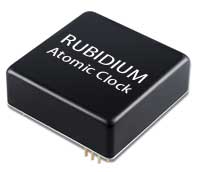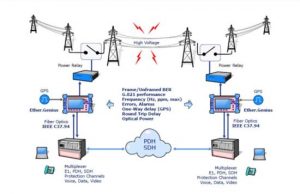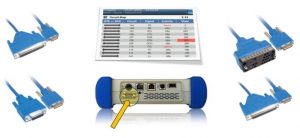Multiport Interfaces
- A:B ports: 2 x SFP (100MbE, 1GbE)
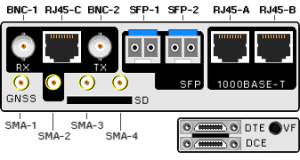
- A:B ports: 2 x RJ45 (10MbE, 100MbE, 1GbE)
- C:D ports: Balanced 2 x RJ45 (T1/E1)
- C:D ports: Unbalanced 2 x BNC (T1/E1)
- DTE/DCE ports: V.35, V.24 / RS 232, V.11 / X.21, V.36, RS:530
- GNSS Port: SMA female
- PPS Ports: 3xSMA female (i/o)
Operation / Results
- Graphical results MTIE and TDEV
- Navigation: by touch screen, keyboard, mouse
- Remote Control: by VNC
- Storage capacity: one week of results
- Export: results in pdf/txt/csv through USB interface or SD card
- Report export to remote host through Ethernet / IP
Ergonomics
- Protection: shock-proof and rubber boot
- Light and easy to carry (weight: 1.2 kg)
- Start: Manual / Timed with optional password
Batteries
- T1/E1 operation time = t > 24h
- GbE operation time = t > 12h
- 10GbE operation time = t > 6h (Ether10.Genius)

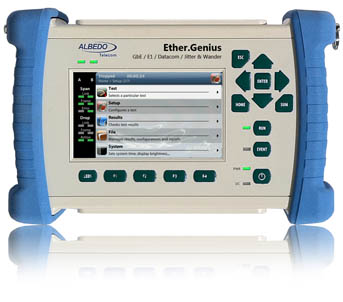
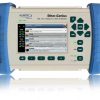

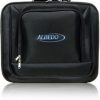
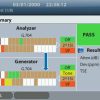

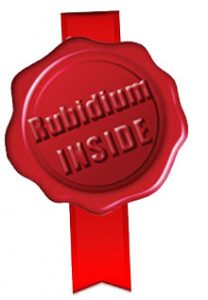
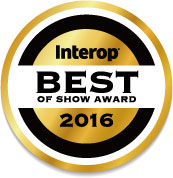 Ether-Genius
Ether-Genius